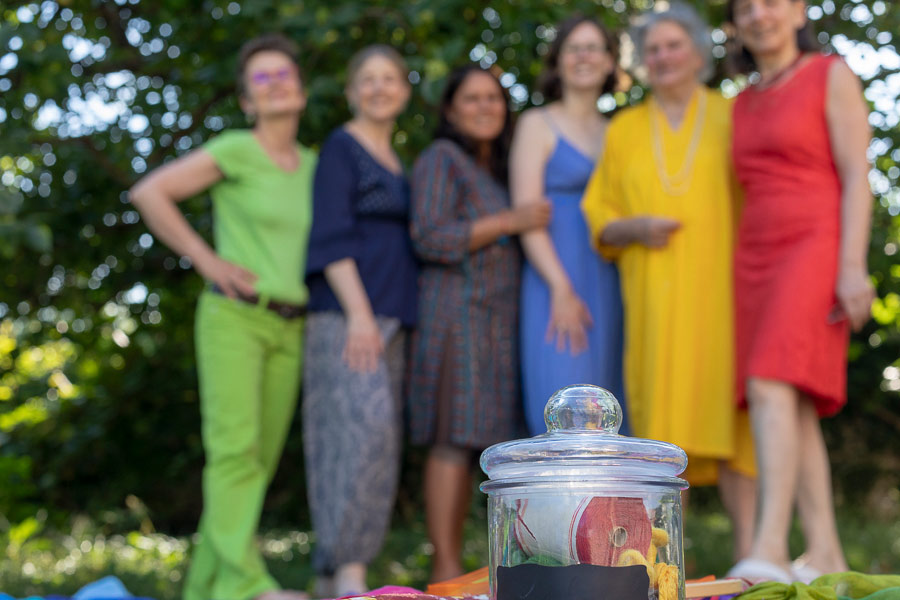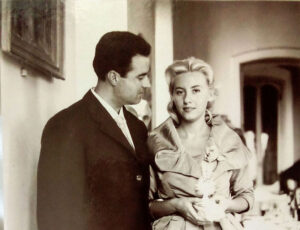Women’s solidarity has very ancient origins. In fact, since ancient times, the ceremonials and rites linked to the “feminine” and to nature have been celebrated and honored in their sacredness by women. This happened very often within matriarchal cultures and societies, in which women and priestesses were entrusted with all those rites and all those celebrations of moments of transition linked to the cycle of life, growth and death of the human being (such as childbirth, menarche, the development of adulthood, menopause and death), linked to the cycles of nature (in connection with the seasons and the consequent crops), and the cycles and events linked to climatic conditions.
With the transition from a matriarchal and polytheistic society, more connected to Nature, to a patriarchal society, more disconnected from the earth and more inclined towards other forms of sustenance and territorial conquest, also thanks to the progressive affirmation of monotheistic beliefs and religions, linked to the cult of a god (always male), these ceremonies of female solidarity have taken on a more intimate and reserved dimension.
These ceremonies of Women’s solidarity have no longer transformed into a moment of collective participation in a shared ritual, but into a moment of voluntary “isolation” of women to carve away the dignity and joy of feeling like sisters, linked to each other by the rhythm and physiological connection of the cycle and cycles of Nature, the lunar cycles and the cycles of the seasons.
The idea of sisterhood, or that bond that unites women, beyond any linguistic, cultural, geographical and social difference, is a concept that has never faded over time, but which has certainly undergone ups and downs, is also based on the power and the possibility of decision that women have been able to experience in themselves, in their bodies (and therefore in their own life destinies) and also in the surrounding society.
The Suffragette movement which developed in the 19th century first in France with the memorable figure of Olympe de Gouges, who already in 1791 wrote the “Declaration of the rights of women and of the citizen”, and then the following year, in 1792, in the United Kingdom with the text “A Vindication of the Right of Women” by Mary Wollstonecraft gives rise to a whole series of women’s circles linked not only to a ritual purely linked to moments of passage of being a woman that we have already mentioned, but to a real political awareness (and feminist, in the original and noble meaning of the term) which led women to meet to celebrate passages, rites, battles of civilization and revolutionary acts of claiming one’s rights and one’s dignity which had never happened before. Thanks to Millicent Fawcett who in 1869 founded her “National Society for Women’s Suffrage” and then to Emmeline Pankhurst, who in 1903 founded the “Women’s Social and Political Union” we arrive at Lady Nancy Astor, the first female deputy elected in a Parliament, the English one, of course.
In Italy the path will still be long and painful and to have a woman in Parliament we will have to wait until 1948 with Nilde Iotti and Lina Merlin. But the die is cast.
Now, in our age, the adjective “feminist” is often perceived with a slightly antiquated, negative and almost “violent” coloring, and we prefer to replace it with the adjective “feminine” which refines (or so it seems) the concept that expresses and represents everything related to the world of women, their bodies, their abilities, personalities, professionalism and willingness to network in order to cultivate and strengthen that “sisterhood” too often forgotten and swept away by the wind of the prevailing patriarchy.
So celebrating a sisterhood rite today becomes fundamental. Even today, or perhaps, precisely today, where women’s search for “power” and incisiveness in society becomes (sometimes) a repetition of the logic and behaviors typical of the most violent patriarchy, today more than ever it is necessary to save and celebrate women’s solidarity.
A female rite allows us to remember how far we have come as women to reach those goals that today seem so obvious to us, those rights (just think of the right to vote) that today appear so obvious to us, almost banal.
We’ve come a long way, as women, and that’s why celebrating a sisterhood rite (whether it’s a women’s circle, the birth of a son or a daughter and therefore the consequent birth of a mother, the transition to adulthood which, in women, has the appearance of menarche as its real threshold), well, celebrating these rites all together helps us to become aware of the journey we have made up to now and to strengthen our bond and our sensitivity and female strength. This force can and must be an alternative, something complementary to the other half of the world, even if today, dividing the world in two is something old-fashioned and unjust.
By now the world is rainbow and variegated and complex constellations are part of it which push us, once again, to look beyond the goals achieved and beyond any certainty (or pseudo certainty) with which we are used to deciphering what we have around. So that’s why in the circles among women and in the female rituals that I have the joy of conceiving and leading, there is never only black or white, but a myriad of colors exist and co-exist peacefully and in harmony; different, gaudy, unique and with a thousand shades, just like the world that we hope to be able to build all together: colorful and multiform, like a beautiful garden where each flower has its own place and its own dignity, unique, precious, irreplaceable .




